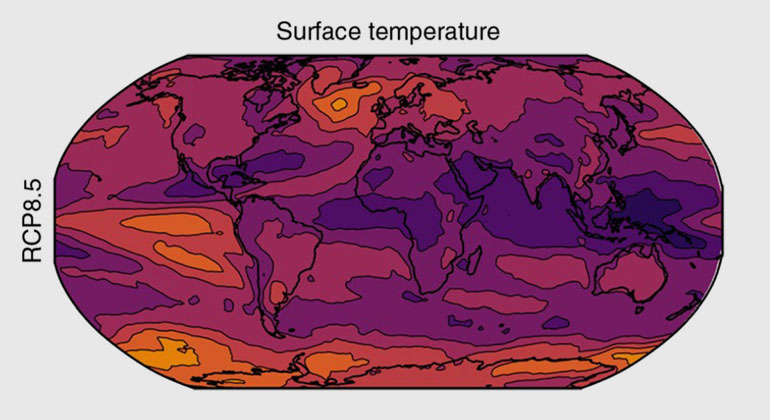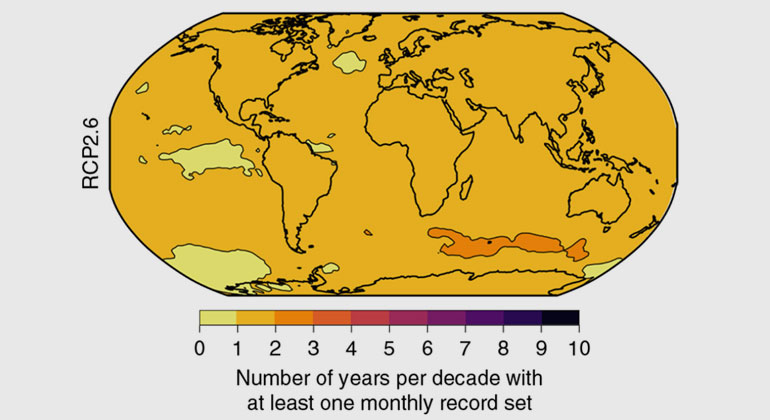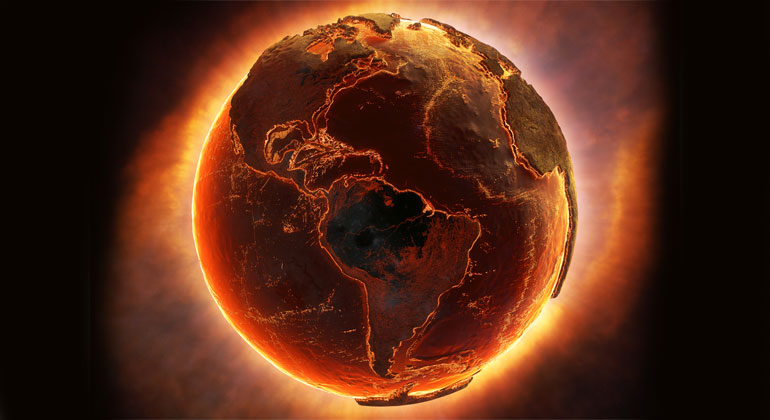More than half the world could see ‘record-setting heat’ every year by 2100
More than half of the world could see new temperature records set in every single year by the end of the century if global warming is not curbed, a study finds.
And new heat records could be set in two-thirds of the world’s least developed countries each year by 2100 under the same scenario, the research adds.
Limiting global warming to below 2C above pre-industrial levels could reduce the extent of land seeing record-setting heat by almost three quarters, the lead author tells Carbon Brief.
The research “nicely illustrates the pace of change”, another scientist tells Carbon Brief. However, it is worth noting that there are limitations to using climate models to project future temperature extremes, he adds.
Heating up
Climate change is causing unprecedented heat extremes worldwide. The past four years have been the warmest on record – with 2016 being the hottest year ever recorded.
In 2016, temperatures at the Mitribah weather station in Kuwait reached 53.9C – the highest ever seen in Asia, according to a recent study.
During last summer’s northern-hemisphere heatwave, temperature records were broken in cities across the world, including Belfast, Montreal, Denver and Kumagaya in Japan. The world also saw its highest ever “minimum” temperature, when a city in Oman experienced a 24-hour period where temperatures did not drop below 42.6C.
The new study, published in Nature Climate Change, explores how often new temperature records are likely to be set in the future across every world region. Lead author Dr Scott Power, head of climate research at the Australian government’s Bureau of Meteorology, explains to Carbon Brief:
“We investigated the rate of extreme high-temperature record-setting and ‘record-smashing’ – when a record exceeds the record it replaces by a large amount. The research shows that the benefits of reducing global greenhouse emissions is clear by the end of the 21st century in terms of both reducing the pace of record-setting and record-smashing.”
The authors used climate models to explore how often new temperature records are likely to be set – and “smashed” – across the globe. They investigated record-setting heat under two possible future scenarios: one with very high greenhouse gas emissions (“RCP8.5”) and one where global warming is limited to below 2C (“RCP2.6”).
The results show that, under the high-emissions scenario, up to 58% of the world could see a new temperature record set in at least one month every year by 2100.
If temperature rise is limited to 2C, a smaller 14% of the world would see new record temperatures every year by that time.
The chart below, taken from the paper, gives a picture of how the percentage of the world seeing record-setting heat is likely to change over the course of the century.
On the chart, the red line shows model simulations from the high-emissions scenario, while the blue line shows simulations from the scenario where global warming is limited to below 2C. (The grey line shows a comparative “pre-industrial” scenario with no climate change.)










